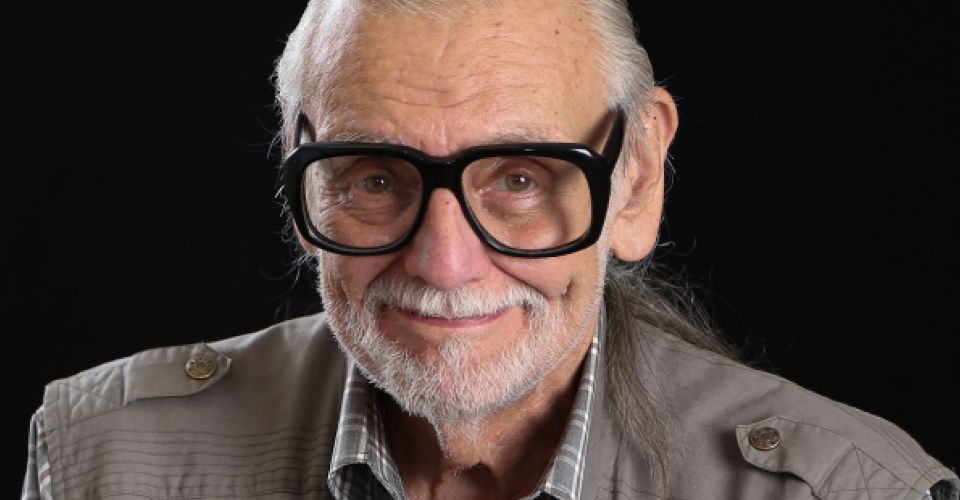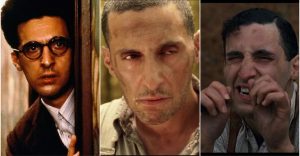Ranking All 15 George A. Romero Films From Worst To Best

George A. Romero is considered one of the “Mount Rushmore” of horror filmmakers. Along with John Carpenter, Wes Craven, and Dario Argento (or Tobe Hooper, depending on who you ask), Romero is the rare horror filmmaker who brought change to the genre by creating important works that resonate with audiences both old and new.
With 1968’s Night of the Living Dead, Romero reinvented the zombie genre, becoming its reigning king until his death in 2017, leaving behind a unique film legacy that lives on.
15 There’s Always Vanilla (1971)/ Season Of The Witch (1972)

Romero made these two films back to back. There’s Always Vanilla was his try at romantic comedy and Season of the Witch was also a relationship film but filled with witchcraft. Each film shared many of the same sets.
Neither film resonated with audiences or critics nor stood out among the director’s filmography. It wasn’t until he returned to genre filmmaking that critics and the public began to take notice.
14 The Crazies (1973)

Romero’s films were always ahead of their time. The director could never have imagined how prophetic he was being with his 1973 film, The Crazies. The story of a town overcome by a virus and the government’s attempt to contain it at any cost is one that 2020 has made a reality.
Romero’s budget was small but he achieved a palpable sense of dread and terse moments. The film plays well despite its budget shortcomings. Fans have long argued that Simon West’s 2010 remake is better but patient viewers will find that patented Romero potency in the original.
13 Survival Of The Dead (2009)

In what would be his swan song as a filmmaker, George A. Romero put his zombies amongst two warring family clans, ala the Hatfields and McCoys, who coexist on an island off the coast of North America.
This marked a return to form for the filmmaker but Survival of the Dead didn’t get the reception it desired. The film divided critics and fans who felt the film’s tone and structure were inconsistent with the rest of the series. It received a lackluster release before throwing it to home video.
12 Bruiser (2000)

Bruiser is an oddity amongst Romero’s filmography. A cuckolded and bullied husband with no backbone wakes up to find his face replaced with a blank white unremovable mask. This gives him new courage to stand up to his wife and other bullies, resulting in violence.
Romero was proud of the well-directed and written film but the studio failed to market it. What was to be a major Romero release was thrown to home video with no fanfare.
11 Two Evil Eyes (1990)

Horror masters Dario Argento and George A. Romero teamed up for a horror film anthology, Two Evil Eyes, based on the works of Edgar Allen Poe. Romero’s segment “The Facts in the Case of Mr. Valdemar” tells of a dying old rich man whose wife and doctor hypnotize him to steal his will. The old man dies while under hypnosis and his spirit becomes vengeful!
Critics were split on the film but genre fans made it a cult classic. It never received a full release in America but was a moneymaker in Europe and Italy.
10 Monkey Shines (1988)

Romero channeled the cinematic world of Hitchcock in his 1988 chiller Monkey Shines, the story of a man who is paralyzed from the neck down and the monkey who helps care for him. When the monkey begins to think for itself, a war of dominance ensues.
Most of the film is set in the man’s home, creating real tension out of the claustrophobic surroundings. A critical if not commercial hit, the film did very well on home video.
9 Diary Of The Dead (2007)

Romero gave in to the “found footage” craze that swept the horror scene with 2007’s Diary of the Dead, his zombie film about a group of film students who run afoul of the beginning of a zombie outbreak. We see the action through the camera lens of the students.
The director found clever and interesting ways to craft his classic style of zombie horror with this latest film technique. The film was well-received both commercially and critically while fans were pleased to have another chapter in Romero’s zombie odyssey.
8 The Dark Half (1993)

This was Romero’s adaptation of the hit Stephen King novel about a writer whose dangerous alter-ego begins to take over his life.
Timothy Hutton starred as both sides of the writer and delivered one of the decade’s finest horror film performances. Romero crafted a creepy tale surrounded by a proper atmospheric quality.
7 Land Of The Dead (2005)

Romero’s return to the zombie film after 20 years was an exciting and worthy return. Land of the Dead saw the zombie outbreak in full destruction mode, as the walking dead have taken over most of the world and the rich live in walled fortresses.
It was thrilling for audiences and critics to see Romero bring back his social commentary to the horror world. Dennis Hopper, John Leguizamo, and Asian Argento joined the master for his moody, gore-filled, and triumphant return.
6 Knightriders (1981)

The most unique of all Romero’s films, Knightriders tells of a motorcycle group who performs and lives life as a king and his knights. All is peaceful until The Black Knight becomes a celebrity, challenging the king’s reign.
Ed Harris and Tom Savini lead the cast while Romero expertly mixes drama and action with truly fantastic motorcycle stunt work.
5 Martin (1977)

A young man may or may not be a vampire in George A. Romero’s 1977 film Martin. This film was a psychological thriller but there is a good amount of blood to keep genre fans happy.
Romero infused the film with an atmosphere of unease that he maintained throughout the film. The film didn’t find an audience in 1977 but has grown in stature amongst Romero’s films.
4 Day Of The Dead (1985)

1985’s Day of the Dead split fans of Romero’s “of the Dead” series. Many loved it while some complained it was too “talky” and took too long to get to the gore.
The game Resident Evil was inspired by the film and it is now recognized as one of Romero’s best. It shows the urgency and desperation of surviving a world full of zombies. Romero gets some good drama out of the verbal battles between scientists and military personnel who differ on ways to handle their situation. The film is a tight horror film and Tom Savini’s gore effects are absolutely jaw-dropping.
3 Creepshow (1982)

The first pairing of horror icon Stephen King and George A. Romero became an instant horror classic. Creepshow was King and Romero’s homage to the E.C. horror comics of the 1950s. The film included four segments of terror bookended by a creepy story involving voodoo. There are tales of zombies, alien goo, monsters, and an army of cockroaches.
Each segment was expertly crafted as a visual comic, giving the film color palettes that popped. With a great cast that included Adrienne Barbeau, Leslie Nielsen, and an unknown Ted Danson, Creepshow was a box office hit and is regarded as one of the great horror anthologies.
2 Night Of The Living Dead (1968)

The film that started it all for Romero. Working with next to no budget, the filmmaker and his crew crafted a terrifying horror classic that was also a powerful statement on 1968-era America.
Filmed in black & white and featuring some truly frightening moments, this was one helluva filmmaking debut for Romero. Night of the Living Dead is rightfully considered a pure horror masterpiece.
1 Dawn Of The Dead (1978)

10 years after Night of the Living Dead, Romero changed the genre again with his universally praised Dawn of the Dead. Four people are holed up inside a shopping mall. Outside, armies of the undead try to get in. Eventually, a renegade biker gang will come crashing into the mall, changing everyone’s fate.
The mixture of Romero, the makeup effects of Tom Savini, and the music of Goblin proved to be horror magic. The film is a dark, gory, and scary treatise on American consumerism. Clocking in at almost 2 and 1/2 hours, Romero doesn’t waste a single moment. This film was his most ambitious and his skill as a filmmaker shines in every frame. Most consider this film his masterwork.

















